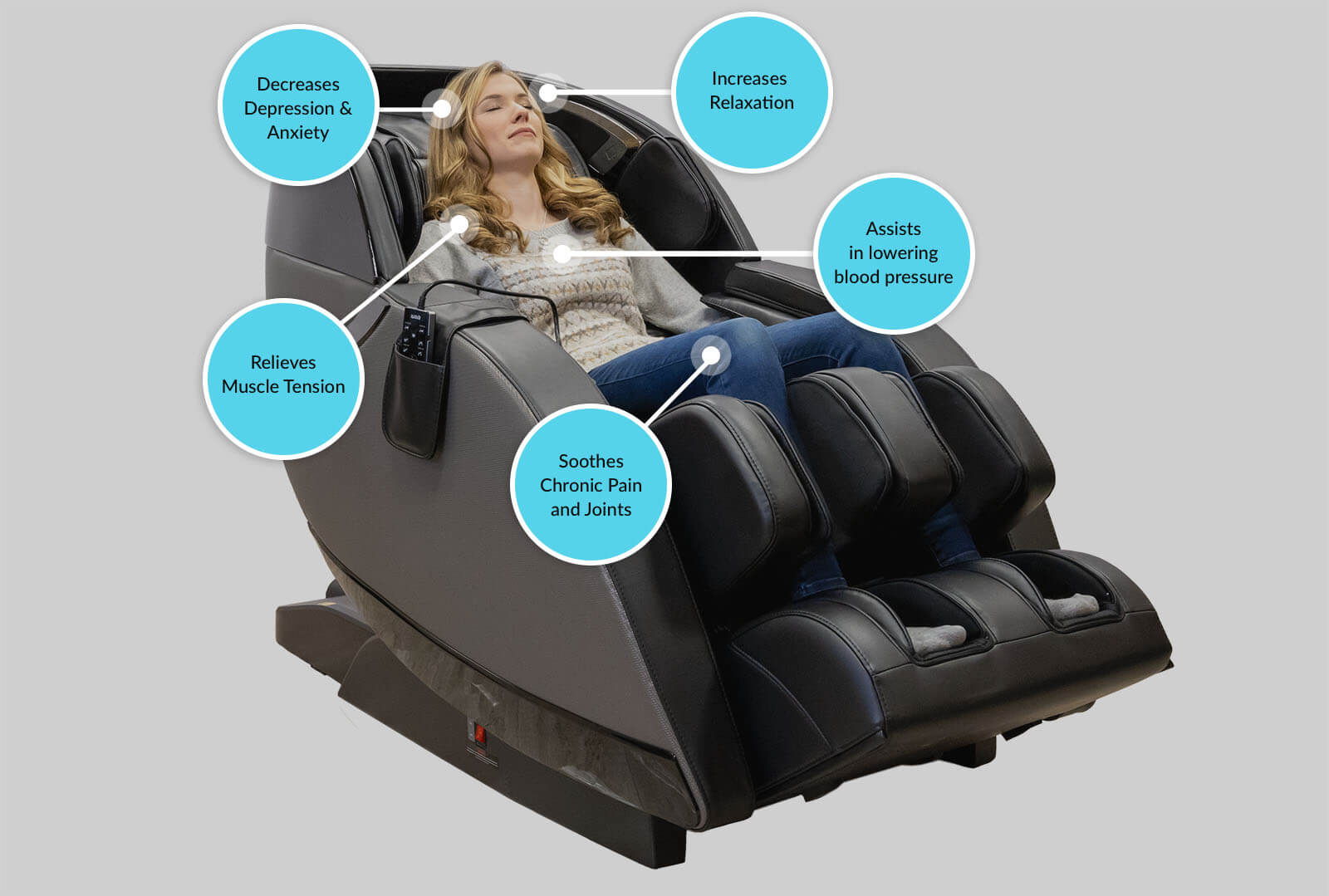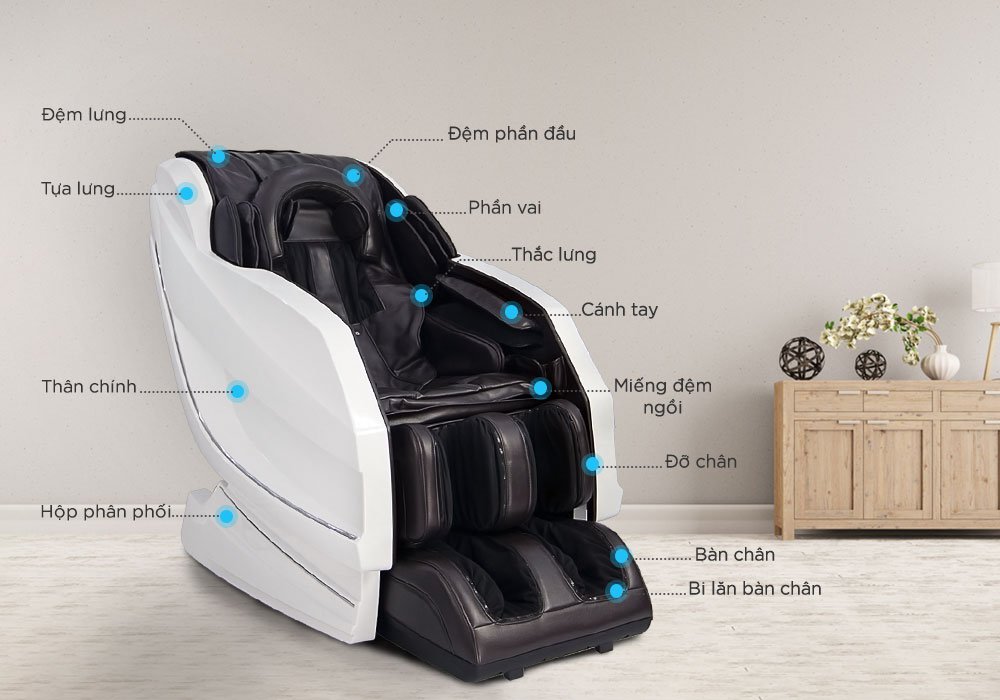Anatomy of a Massage Chair

Stepping into a massage chair is like entering a sanctuary of relaxation. But have you ever wondered what makes these chairs so effective? Let’s delve into the anatomy of a massage chair, exploring the components that contribute to its therapeutic touch.
Key Components and Their Functions
A massage chair is a complex system of interconnected parts, each playing a vital role in delivering a soothing and invigorating experience.
- Frame: The foundation of the chair, providing structural support and stability. Constructed from durable materials like steel or aluminum, it ensures the chair can withstand the weight and movements of users.
- Motors: The driving force behind the chair’s massage mechanisms. These powerful motors are responsible for the chair’s movements, such as reclining, rolling, and kneading.
- Control Panel: The user interface, allowing you to customize your massage experience. It typically features buttons or a touchscreen for adjusting massage intensity, speed, and target areas.
- Airbags: Inflatable chambers strategically placed throughout the chair. These airbags provide compression and pressure, mimicking the feeling of a human massage therapist’s hands.
- Heat Therapy: Some chairs incorporate heating elements, usually in the back or lumbar region. This feature helps to relax muscles and promote blood circulation.
- Roller System: A key component of many massage chairs, consisting of rollers that move up and down the back. These rollers provide deep tissue massage, targeting specific muscle groups.
- Sensors: Advanced chairs may feature sensors that detect the user’s body shape and size, automatically adjusting the massage to provide a personalized experience.
Types of Massage Mechanisms
Massage chairs employ a variety of mechanisms to replicate the techniques used by human therapists.
- Rolling Massage: A common technique that mimics the rolling motion of a therapist’s hands. Rollers move up and down the back, providing a deep tissue massage that targets muscle knots and tension.
- Kneading Massage: This technique simulates the kneading action of a therapist’s hands. Airbags or rollers press and release muscles, promoting relaxation and blood circulation.
- Tapping Massage: A rhythmic tapping motion that stimulates the muscles and promotes circulation. It is often used in conjunction with other massage techniques.
- Shiatsu Massage: A traditional Japanese massage technique that involves applying pressure to specific points on the body. Shiatsu massage chairs typically use rollers or airbags to target these acupressure points.
- Air Compression Massage: This technique uses inflatable airbags to apply pressure to different parts of the body, such as the legs, arms, and feet. Air compression massage is often used to improve circulation and reduce swelling.
Massage Chair Parts Diagram
[Insert a detailed description of the massage chair parts diagram, including the placement and connections of the main parts.]
Materials Used in Massage Chair Construction
The materials used in massage chair construction are crucial for durability, comfort, and aesthetics.
| Material | Advantages |
|---|---|
| Steel | Strong, durable, and affordable |
| Aluminum | Lightweight, corrosion-resistant, and stylish |
| Leather | Luxurious, breathable, and easy to clean |
| Fabric | Comfortable, breathable, and available in a wide range of colors and patterns |
| Polyurethane Foam | Durable, comfortable, and provides good support |
Understanding Massage Chair Parts: Massage Chair Parts Diagram

Massage chair parts diagram – A massage chair is a complex piece of machinery with various components working in harmony to deliver a relaxing and therapeutic massage experience. Understanding the different parts and their functions can help you appreciate the technology behind these chairs and make informed choices when selecting one.
The Motor System
The motor system is the heart of a massage chair, responsible for powering the massage movements. It consists of powerful electric motors that drive the rollers, air compression systems, and other mechanisms. The type of motor used determines the chair’s massage intensity, speed, and range of motion.
- DC Motors: These motors are commonly found in lower-end massage chairs. They are generally quieter and more energy-efficient but offer limited power and speed compared to AC motors.
- AC Motors: AC motors are more powerful and deliver faster massage movements. They are often used in high-end chairs that provide more intense and dynamic massage experiences.
Roller Types and Massage Techniques
Massage chair rollers are designed to mimic the techniques of a human masseuse, applying pressure and manipulating muscles to relieve tension and promote relaxation. Different types of rollers are used to achieve specific massage effects.
- 3D Rollers: These rollers move in three dimensions (up/down, left/right, and forward/backward), providing a more comprehensive and realistic massage experience. They can reach deeper muscle layers and offer a wider range of massage techniques.
- 4D Rollers: This advanced type of roller adds a fourth dimension to the massage by incorporating a “pulsating” motion. This creates a more dynamic and invigorating massage experience, mimicking the sensation of a human masseuse’s hands.
- Air Compression: This system utilizes inflatable airbags placed strategically along the chair to apply pressure to different parts of the body. It can be used to massage the arms, legs, feet, and back, providing a soothing and relaxing experience.
The Air Compression System, Massage chair parts diagram
The air compression system is an essential part of many massage chairs, providing a unique form of massage therapy. It works by inflating and deflating airbags located in different areas of the chair, applying pressure to specific muscle groups.
- Airbag Placement: Airbags are typically positioned along the back, arms, legs, and feet, allowing for targeted massage of these areas.
- Pressure Control: Most massage chairs offer adjustable pressure levels for the air compression system, allowing users to customize the intensity of the massage according to their preferences.
- Massage Techniques: Air compression can be used to simulate various massage techniques, including kneading, tapping, and rolling. It can also be used to provide gentle stretching and compression, promoting circulation and reducing muscle tension.
The Control Panel
The control panel is the user interface of a massage chair, allowing users to select massage programs, adjust settings, and control various features. It typically features a variety of buttons and functions, depending on the chair’s model and capabilities.
- Massage Programs: Massage chairs offer a range of pre-programmed massage sequences designed for specific needs, such as relaxation, pain relief, or deep tissue massage.
- Massage Intensity: Users can typically adjust the intensity of the massage, ranging from gentle to vigorous, depending on their preference and comfort level.
- Roller Speed: Some massage chairs allow users to control the speed of the rollers, offering different massage rhythms and sensations.
- Air Compression Levels: The control panel allows users to adjust the pressure of the air compression system, customizing the intensity of the massage to their liking.
- Heat Therapy: Some chairs feature a heating function that can be activated to provide soothing heat to specific areas, such as the back or legs.
Understanding a massage chair parts diagram can help you identify the different components that contribute to its therapeutic effects. For example, the rollers, airbags, and heating elements are crucial for providing a soothing and relaxing experience. If you’re looking for a quality massage chair at a great price, consider checking out the selection at massage chair sam’s club.
Once you’ve found a chair that suits your needs, you can then delve deeper into the specific parts and how they work together to provide a truly restorative massage.
Understanding a massage chair parts diagram can be helpful when you’re considering a purchase, as it gives you a clear picture of the inner workings. For example, the infinity riage x3 massage chair boasts a sophisticated design, and knowing the placement of its rollers and air cells can help you understand how it delivers its targeted massages.
Ultimately, a parts diagram can guide you to make the best choice for your relaxation needs.